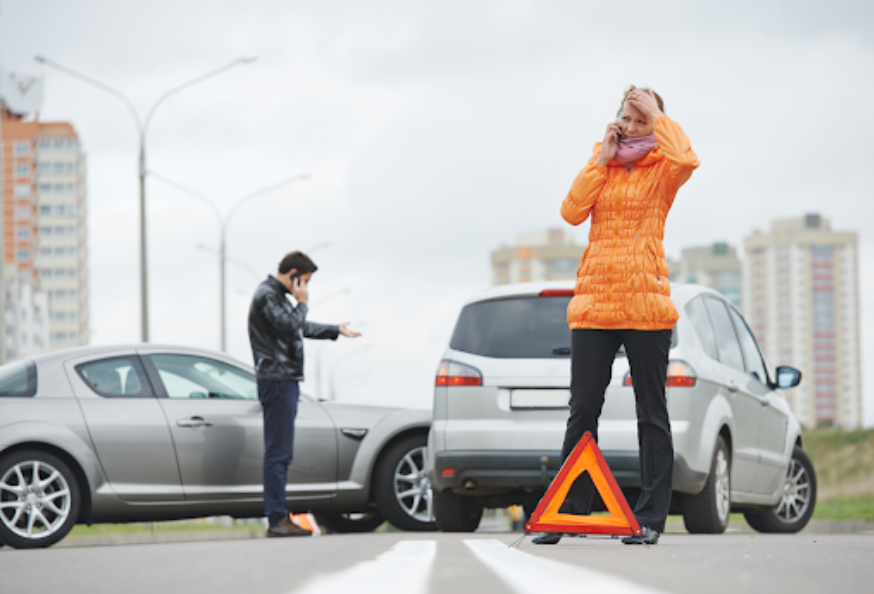The Critical Role of Reaction Times in Driving
Driving reflexes play a crucial role in ensuring road safety. The ability to react quickly to sudden changes or hazards on the road can be the difference between a safe journey and a potential accident. This article delves into the importance of reaction times in driving, explaining what reaction time is and why it matters for every driver.
The Importance of Reaction Times in Driving
When driving, every second counts. Reaction time refers to the interval between the perception of a stimulus (such as a pedestrian stepping onto the road) and the driver's response (such as hitting the brakes). Faster reaction times can prevent collisions and save lives. Conversely, delayed reactions can lead to accidents, injuries, or even fatalities. Given the high stakes, understanding and improving reaction times is essential for all drivers.
What is Reaction Time?
Reaction time is a measure of how quickly an individual responds to a stimulus. In the context of driving, it encompasses the time taken to perceive a hazard, process the information, and initiate a response. This period is typically measured in milliseconds (ms).
Why Reaction Time Matters for Drivers
Accident Prevention: Quick reaction times allow drivers to respond promptly to unexpected situations, reducing the likelihood of accidents.
Road Safety: Improved reaction times contribute to overall road safety, protecting not just the driver but also passengers, pedestrians, and other road users.
Legal and Financial Implications: Faster reaction times can help avoid accidents, potentially reducing legal liabilities and financial costs associated with collisions.
By recognising the significance of reaction times and taking steps to enhance them, drivers can contribute to safer roads and better driving experiences. In the following sections, we'll explore the factors affecting reaction times, how professional drivers maintain sharp reflexes and practical tips for improving your own reaction times.
Understanding Reaction Times
Reaction times are typically measured in milliseconds (ms). The average reaction time for drivers is around 250-300ms, but this can vary based on several factors.
Factors Affecting Driving Reaction Times
Age and Reaction Time
As we age, our reaction times generally slow down. Older drivers may need more time to process information and react to road hazards.
Fatigue and Sleep Deprivation
Lack of sleep can severely impair reaction times. Fatigued drivers are less alert and take longer to respond to unexpected situations.
Alcohol and Drugs
Both alcohol and drugs, including certain prescription medications, can slow down reaction times, making it dangerous to drive under the influence.
Distractions
Using mobile phones, eating, or other in-car distractions can delay reaction times, increasing the risk of accidents.
Health Conditions
Medical issues such as vision impairment, neurological disorders, or even stress and anxiety can negatively affect reaction times.
Professional Drivers' Reaction Times
Data and Statistics
Professional drivers, such as Formula 1 racers and emergency responders, typically have reaction times much faster than average drivers. Here are some examples:
Max Verstappen: Known for his incredible reaction time of approximately 0.231 seconds.
Lewis Hamilton: Renowned for his quick reflexes, with an average reaction time of about 0.2 seconds.
Ayrton Senna: Historically recorded reaction times around 0.17 seconds, highlighting his exceptional reflexes.
Valtteri Bottas: At the 2019 Japanese Grand Prix, Bottas recorded an astonishing reaction time of just 0.04 seconds, the fastest ever recorded in F1
These impressive times are a testament to the rigorous training and natural aptitude of these drivers. The average reaction time for an F1 driver typically ranges from 0.2 to 0.3 seconds, significantly faster than the average driver's reaction time of 250-300ms.
Training and Preparation
Professional drivers undergo extensive training to maintain and enhance their reflexes. This training includes:
Physical Fitness Routines: Exercises focusing on overall body strength, especially neck and core muscles, which are crucial for handling the high G-forces experienced during races.
Mental Exercises: Activities like reaction time drills, puzzle solving, and strategy games to keep the mind sharp.
Simulator Practice: Advanced driving simulators that mimic real race conditions, allowing drivers to practise their responses to various scenarios without the risks associated with real-life driving.
By comparing the reaction times of professional drivers with those of average drivers, it's evident that training and lifestyle choices play a crucial role in enhancing reflexes. For example, while an average driver might have a reaction time of 250-300ms, the best professional drivers can react in as little as 0.04 to 0.2 seconds. This significant difference underscores the importance of dedicated training and the physical and mental conditioning that professional drivers undergo to maintain peak performance.
Improving Your Reaction Time
Improving your reaction time is a multifaceted approach that includes mental exercises, physical fitness, a healthy lifestyle, and specific driving practices. Here’s how you can enhance your reflexes to become a safer and more responsive driver:
Activities to Keep the Brain Sharp
Engaging in mental exercises can significantly improve your reaction times. Here are a few activities to consider:
Puzzle Solving: Crosswords, Sudoku, and brainteasers can help improve cognitive function and speed.
Memory Games: Games that challenge your memory can boost brain speed and enhance reaction times.
Reaction Time Apps: There are several apps designed specifically to improve your reflexes through quick-response tasks.
Physical Fitness
Importance of Physical Health for Quick Reflexes
Maintaining good physical health is crucial for quick reflexes. Physical fitness enhances your body's ability to respond rapidly and effectively. Here are some key fitness tips:
Cardio Exercises: Activities like running, cycling, and swimming improve overall fitness and cardiovascular health, which in turn enhances reaction times.
Strength Training: Building muscle strength, particularly in the core and lower body, can improve stability and reaction times.
Flexibility and Balance: Practices like yoga and tai chi improve flexibility and balance, which are important for quick and accurate responses.
Healthy Lifestyle
Diet and Habits that Boost Reaction Time
A healthy lifestyle supports optimal brain function and quick reflexes. Here are some lifestyle tips:
Balanced Diet: A diet rich in fruits, vegetables, lean proteins, and whole grains supports brain health. Omega-3 fatty acids, found in fish and flaxseeds, are particularly beneficial.
Adequate Sleep: Ensuring 7-9 hours of quality sleep per night is crucial for maintaining quick reflexes and overall cognitive function.
Hydration: Staying well-hydrated helps maintain focus and quick thinking.
Avoiding Substances: Reducing alcohol and caffeine intake can improve reaction times by preventing sluggishness and jitteriness.
Driving Practice
Specific Driving Exercises to Enhance Reflexes
Practising specific driving exercises can also help improve your reaction times:
Emergency Stops: Practising emergency stops in a safe, controlled environment helps build muscle memory and quickens response times.
Obstacle Courses: Navigating through obstacle courses can improve your ability to react quickly to unexpected changes.
Driving Simulators: Using a driving simulator can help you practise and improve your reaction times in a variety of scenarios without real-world risks.
A reaction time testing tool is designed to help you measure your reflexes accurately and conveniently. This tool provides a simple yet effective way to test and track your reaction times
Comparison
Once you have your reaction time results, compare them with the average reaction times of professional drivers. Here’s a quick comparison:
By comparing your results, you can set goals and track your progress as you work to improve your reaction times. Regular practice with the tool and implementing the tips provided can help you get closer to the reflexes of a professional driver.

The Role of Technology
How Modern Cars Help Improve Reaction Time
Modern vehicles are equipped with advanced driver assistance systems (ADAS) designed to enhance safety by compensating for human reaction time delays. These systems include:
Automatic Emergency Braking (AEB): Detects imminent collisions and automatically applies brakes if the driver does not respond in time.
Lane-Keeping Assist (LKA): Helps keep the vehicle within its lane, reducing the need for sudden corrections.
Adaptive Cruise Control (ACC): Adjusts the vehicle's speed to maintain a safe distance from the car ahead, reducing the need for frequent braking and accelerating.
These technologies assist in reducing the time it takes for a vehicle to respond to potential hazards, thereby improving overall road safety.
Training Simulators
Driving simulators offer a risk-free environment to practise and enhance reaction times. These simulators provide realistic driving scenarios that help drivers improve their reflexes and decision-making skills. Benefits of using simulators include:
Realistic Scenarios: Exposure to a variety of driving conditions and emergencies.
Feedback Mechanisms: Immediate feedback on performance, helping drivers to learn and adjust quickly.
Repetition: The ability to repeatedly practise challenging situations to build muscle memory and confidence.
Apps and Games
Digital Tools Designed to Enhance Reaction Times
There are numerous apps and games specifically designed to improve reaction times and cognitive abilities. Some popular options include:
Lumosity: A brain training app that includes games aimed at improving speed and attention.
BrainHQ: Offers exercises that focus on visual and auditory processing speed.
Reaction Time Test Apps: Simple apps that measure your reaction time through various stimuli, allowing you to track your progress over time.
These digital tools provide an engaging way to improve mental agility and reflexes, contributing to better driving performance.
Reaction Time and Road Safety
Statistics
Research indicates that slower reaction times are a significant factor in road accidents. According to studies, a delay of just one second can increase the likelihood of a crash. For example:
A study by the National Highway Traffic Safety Administration (NHTSA) found that reaction time delays are a critical factor in approximately 90% of rear-end collisions.
The Royal Society for the Prevention of Accidents (RoSPA) reports that improved reaction times can significantly reduce accident rates, particularly in high-speed driving scenarios.
Case Studies
Several case studies highlight the importance of quick reaction times:
A UK-based study found that drivers distracted by mobile phones had reaction times 50% slower than those of unimpaired drivers, leading to a higher incidence of collisions.
An analysis of traffic accidents in Germany revealed that older drivers with slower reaction times were more likely to be involved in serious accidents, especially at intersections.
How Reaction Time Affects Legal Outcomes in Accidents
Reaction times can have significant legal implications in traffic accidents:
Determining Fault: In many cases, the driver's reaction time is scrutinised to establish fault. Drivers with delayed responses may be deemed negligent.
Insurance Claims: Faster reaction times can sometimes mitigate the severity of an accident, affecting insurance claims and liability.
Court Decisions: In legal proceedings, expert testimony on reaction times can influence the outcome of a case, particularly in determining whether a driver had sufficient time to react to a hazard.
Recap of the Importance of Maintaining and Improving Reaction Times for Safe Driving
Maintaining and improving reaction times is crucial for safe driving. Quick reflexes help in accident prevention, enhance overall road safety, and have significant legal and financial implications.
Final Tips for Drivers to Enhance Their Reaction Times
Engage in Regular Mental and Physical Exercises: Keep both mind and body sharp through targeted exercises.
Leverage Technology: Use ADAS features in modern vehicles and driving simulators to practise and improve.
Adopt a Healthy Lifestyle: Ensure a balanced diet, adequate sleep, and regular hydration to support cognitive function.
Stay Focused: Minimise distractions and stay alert while driving.
Encouragement to Stay Vigilant and Proactive on the Road
By recognising the importance of reaction times and taking proactive steps to improve them, drivers can contribute to safer roads for everyone. Regularly assess your reaction times, utilise available tools and technologies, and continue to practise safe driving habits.
About MW Vehicle Contracts
MW Vehicle Contracts offers low-cost leasing for cars, vans, and pick-ups in association with Europe's leading financial institutions. The expertise of our staff in sourcing, supplying, and financing vehicles for your business needs is unrivalled. Over the years, business users from all over the country have benefited from our comprehensive service, which puts the customer in control.
For more information, visit MW Vehicle Contracts.



